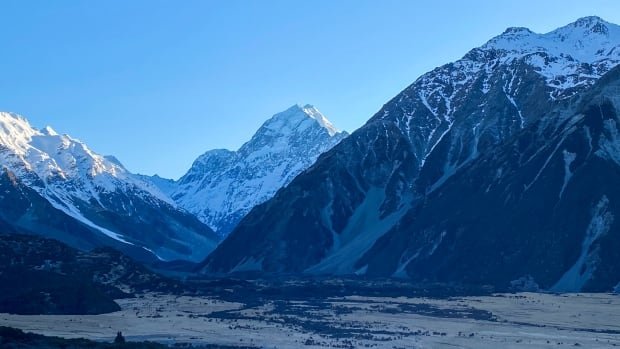Physical Address
304 North Cardinal St.
Dorchester Center, MA 02124
Physical Address
304 North Cardinal St.
Dorchester Center, MA 02124

Three climbers — one from Canada and two from the United States — missing for five days on New Zealand’s highest peak, Aoraki, are believed to have died in a fall, local authorities said Friday.
The bodies of the men were not found. But based on footprints seen in the snow during an aerial survey and items believed to belong to those recovered from the slopes this week, the search has ended, police district commander Inspector Vicky Walker told reporters.
The Americans, Kurt Blair, 56, of Colorado, and Carlos Romero, 50, of California, were certified mountain guides, according to the website of the nonprofit American Mountain Guides Association.
New Zealand authorities have not named the Canadian climber at the request of his family.
The men flew to a hut on the mountain on Saturday to begin the climb and were reported missing on Monday when they failed to meet their pre-arranged transport after the climb. Hours later, searchers found several climbing-related items believed to have belonged to the men, but there was no sign of them, police said.
The search was halted for three days due to severe weather in the region. On Friday, drone operators spotted footprints in the snow and other objects that authorities believe belong to the men.
“After reviewing the number of days the climbers have been missing, the lack of communication, the items we have recovered and our intelligence today, we do not believe the men survived,” Walker said. “We believe they have experienced a fall.”
The search will resume if more evidence comes to light, but the men’s deaths have been turned over to the coroner, Walker added.
Aoraki is 3,724 meters high and is part of the Southern Alps, the scenic and glaciated mountain range that runs the length of New Zealand’s South Island. The settlement of the same name at its base is a destination for local and foreign tourists.
The peak is popular with experienced climbers. Its terrain is technically challenging due to crevasses, avalanche risk, changing weather and glacier movement.
Since the beginning of the 20th century, more than 240 deaths have been recorded on the mountain and in the surrounding national park.